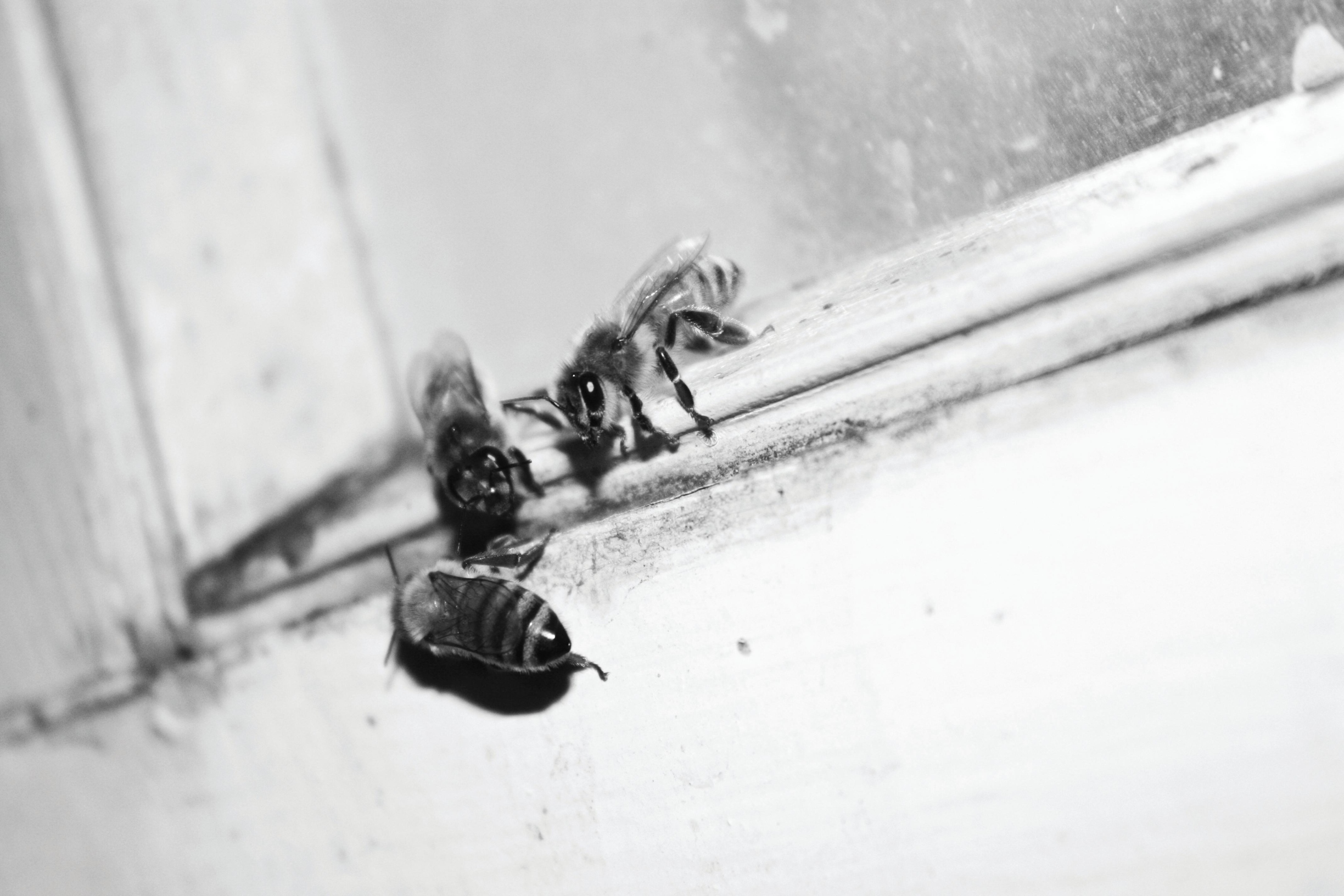Local scholars share importance of honeybees
As the nights get cooler and flowers and plants die off as winter gets closer, USU students and Cache Valley locals may come into contact with some of the area’s small, buzzing residents. Regardless of the circumstances, entomologist Jamie Strange said it’s important for individuals to always stay calm.
“This time of year, as the honey bees are running out of food in nature, they can get a little persnickety,” Strange said. “If you get a bee around you and it starts buzzing around your face, the best thing you can do is walk slowly away. Don’t swat at it, just walk away. Swatting is always a bad thing to do around bees because they sense that motion very quickly and that recruits other bees to come at you.”
Strange, in conjunction with the Stokes Nature Center, hosted a backyard forum on Saturday to talk about the processes associated with beekeeping and honey harvesting, as well as the scientific processes and reasons bees produce the sticky, sweet substance.
“Bees make honey because bees need to have a carbohydrate source to survive the winter,” Strange said. “This time of year, as they’re thinking about winter coming on, as a collective they want to have as much honey on hand as they can. This time of year, things get very combative in nature as everybody is trying to provision themselves for the winter.”
Strange has worked with bees since the mid ‘90s when he was still an undergrad. He went on to complete a master’s and Ph.D. in honey bee studies, treating honey bee diseases and studying reproduction.
Bees produce honey by combining the nectar found in certain flowers and plants with their own enzymes. At the time when it is taken from flowers, Nectar is about 18 percent sugar. Through a process of adding enzymes and evaporation of water, Strange said the solution becomes honey when its content is 82 percent sugar. Some of the honey is stored for the winter, but part of it is used as a food source for new generations of bees.
Honey bees begin winterization of their hives in early spring and summer.
“They never stop,” said Nancy Williams, a local beekeeper and assistant professor of journalism at USU. “They are out there sunup to sundown.”
Because they are constantly active, Williams said worker bees have a short life expectancy.
“In the heat of the summer, the bees only live four to six weeks because they work themselves to death,” Williams said. “They are always busy using the collected pollen and nectar to raise the baby bees.”
Maintaining a hive year-round is more work than one would think, Williams said. Keeping animals away from the hives is a job in itself.
“There are a lot of natural enemies to bees,” Williams said. “Skunks will eat the bee over the honey. Raccoons could have the hive down in no time flat, but would prefer the honey over the bees. Horses will also wreck a hive out in a field.”
While the beekeeper inspects the hive and checks on the bees’ welfare, the insects may get antsy and irritated that the beekeeper is manipulating their workplace and home, sometimes leading to a defense tactic called swarming. In this maneuver, the bees cluster in a giant black cloud and evacuate the hive.
“Swarming is normal bee behavior and you can’t stop them,” Williams said. “We had two hives swarm this past summer. They will stay together and make a globe next to a tree if you’re lucky. Placing a box under them and tapping the branch will usually make them fall right into the box.”
Strange said honey lovers are better off buying locally harvested honey than commercial products.
“You’re less likely to get honey which is contaminated with some sort of industrial contaminate if you’re doing it locally,” Strange said. “Now if you live next to a big factory, you might want to consider that. What happens is, bees are really collectors of what’s in the environment. Your bees are going to go out and get into whatever is sweet and delicious, but if they’re out on the field and a grower comes and sprays them with pesticides, the bees could die or bring that contaminate back to the hive.”
Honey bees are on the decline due to several factors. Parasites such as tracheal mites and the varroa mite – the number one killer of honey bees – impact populations. But colony collapse disorder, a problem many researchers have been studying in bee populations since 2006, has attracted media attention.
“Colony collapse disorder is a new phenomenon,” Strange said. “It may actually be a periodic, episodic thing that happens every 20 or 30 years of the disease that we just haven’t quite figured out yet. This time it seems more complicated, and there seem to be factors of pesticides related to it, leading to immune suppression perhaps in bees.”
Strange said there are many other factors scientists try to consider.
“There’s also this whole issue of now we’re moving bees around for pollination,” he said. “There are potential nutritional and other stresses that come from that movement that we don’t know about. There are active groups working on all these questions to what’s killing bees.”
Speculation runs rampant in the scientific community regarding the effect the disappearance of honey bees could have on the human race. Strange said there isn’t a simple way to examine the question.
“Bees are so useful because they go to what we like to eat and pollinate those plants,” he said. “I would argue that the interesting parts of our diet – the tomatoes, the eggplants, the peppers, the apples, grapefruit – are all insect-pollinated, but there are plenty of other self-sustaining crops and plants pollinated in other ways. We as a species wouldn’t die off, but I’m not arguing against the importance of honey bees.”

